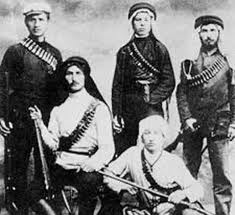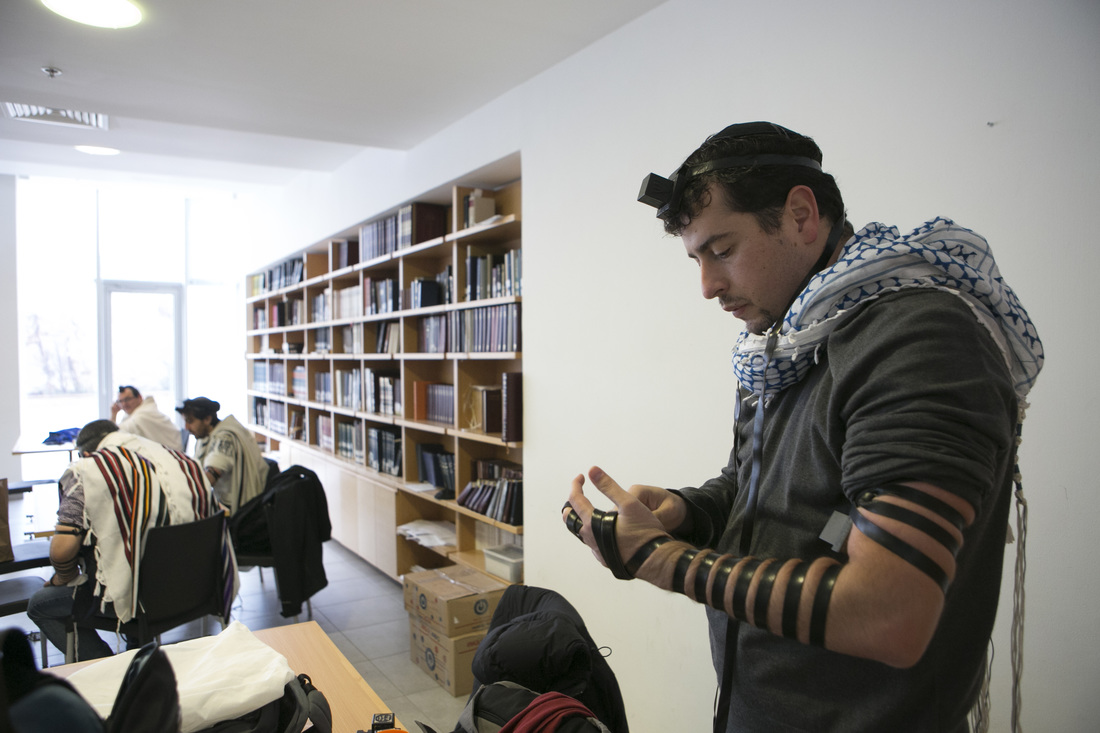
Concerning the kaffiyeh, which is a garment worn by Arab scholars. It is a long garment, reaching to the floor in front and back and open on the sides. Is a Jewish scholar permitted to wear it or does the wearer violate the law of do not follow any of their customs (Lev. 18:3)?
Halachic Responsa on Islamic Practices is an article I recently wrote at the Schechter Institute. It addresses thirteen hundred years of Jewish life in Muslim society and how the responsa from Jews who lived under Muslims serve as an invaluable historiographical resource. Rabbi Joseph Colon b. Solomon Trabotto's (Maharik) responsa is particularly valuable. The Maharik was a Jewish refugee from the French kingdom's expulstion of 1394. He ended up in the capital of the Duchy of Savoy, a center for rabbinic scholars. The city benefited from the presence of the last chief rabbi of France, Rabbi Yohanan Treves and many others.
Rabbi Joseph’s Talmudic education was according to the French school at the time. His father, Solomon Trabotto was a noted expert in both Talmud and Kabbalah. Due to having to move many times in his life he was forced to gain his living by teaching children.
Rabbi Joseph’s responsa exercised tremendous influence on the development of Halacha and is reflected in Moses Isserles’ glosses to the Shulchan Aruch. Italian Rabbis for three hundred years would quote Rabbi Joseph as an authority. What made his responsa so useful was Rabbi
Joseph’s encyclopedic knowledge and methodological analysis of a wide spectrum of sources. He would extract the basic principles underlying his sources and build a conceptual framework within which he would lay down his rulings. Rabbi Joseph relied on the Mishneh Torah of Maimonides extensively throughout his works.
The questioner is asking this question in an environment where Jews wear the kaffiyeh. He wants to know if there are any halachic ramifications. To understand the context of this question, it is important to know that there is a reference in Berachot 60b to a Sudra which was a scarf worn around the head and hung down over the neck of the wearer. This dress was a regular feature for the Israelites and could very well have been the origin of the kaffiyeh.
Rabbi Joseph was asked the following question: “Concerning the kaffiyeh, which is a garment worn by Arab scholars. It is a long garment, reaching to the floor in front and back and open on the sides. Is a Jewish scholar permitted to wear it or does the wearer violate the law of ‘do not follow any of their customs’ (Lev. 18:3)?”
Surprisingly, R. Joseph does not make mention of the סודרא and answers in a terse way as though this should be obvious to the questioner: “It is plain that the wearing of a kaffiyeh is not forbidden. It is worn because it confers honor on the wearer, giving him the reputation of a scholar. It is evident that one does not wear it to emulate the non-Jews.” Today the kaffiyeh is a clear symbol of Arab culture. Sadly, it has been forgotten that this was once a standard part of Israelite clothing for thousands of years. According to Berachot 60b, the blessing itself confers honor upon the wearer,
כי פריס סודרא על רישיה, לימא: ברוך עוטר ישראל בתפארה
In the beginning of the twentieth century, the Bar Giora and later the HaShomer Jewish self-defense organization revived the use of the kafiyeh
Logically, this very well could have been due to the desire to blend in with their Arab surroundings. Furthermore, the members of both organizations were Socialist Zionists and far from any halachic understanding of the implications of what they were doing. All that being said, Jews seeking an authentic identity in the Land of Israel is central to Zionist aspirations. Perhaps built into the collective subconscious of the Jewish people is a natural affiliation for the Sudra, the authentic Israelite kaffiyeh.
The responsa analyzed in this article are immensely important for their historical value when determining how Jews lived between the Christian and Muslim worlds in the late Middle Ages. Each one of the Rabbis who authored the responsa in the article were expelled from their homes and became Jewish refugees. They had to learn how to deal with being displaced in foreign lands. Seeing how the learned Jewish community responded to each Rabbi with open arms gives a glimpse into one of the historical foundations that kept the Jewish people and scholarship alive in their two millennium long exile. Other factors that were taken into account were how all the authors related to Maimonides and his embrace of philosophy as a way to open to the greater world around them. The Rosh’s (Rabbi Asher) negative views of Maimonides and philosophy led to him incorporating an ignorance of Islam into his responsa. Rabbi Shimon b. Zemach Duran and Rabbi Joseph Colon b. Solomon Trabotto both studied Maimonides in depth and were amicable to philosophy. This was reflected in their comprehensive responsa which addressed Islam as it should be, a monotheistic religion whose followers should be treated within the Talmudic framework of גרי תושב.
During the difficult times between Jews and Muslims in the Holy Land, it would be wise to utilize the lessons learned from these responsa. A lesson from Rabbi Asher is that Jews can not be ignorant of Islam and through interfaith dialogue a comprehensive understanding must be developed of each other’s religion. The responsa of Rabbi Shimon teaches that although it may not be proper to join in a meal with Muslims during their festival of Eid al-Adha, that the Jews should make sure to develop friendships and send gifts during this time. Finally, Rabbi Joseph teaches that reviving the use of the Sudra, or the Israelite kaffiyeh, may be a way to create bridges between Jewish and Islamic scholars whose common dress would create familiarity.

 RSS Feed
RSS Feed

